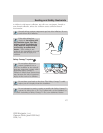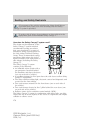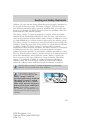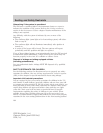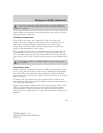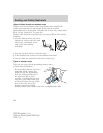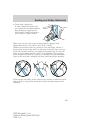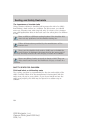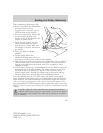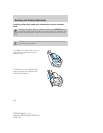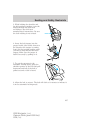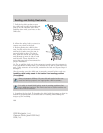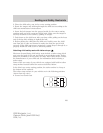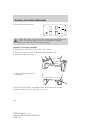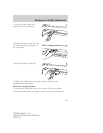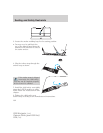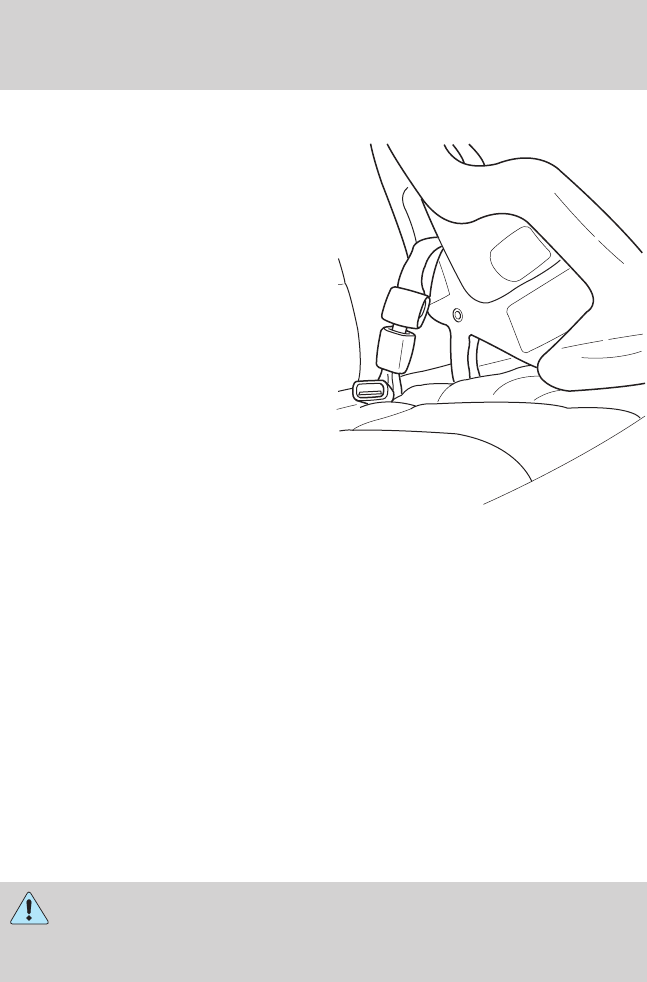
When installing a child safety seat:
• Review and follow the information
presented in the airbag
supplemental restraint system
(SRS) section in this chapter.
• Use the correct safety belt buckle
for that seating position (the
buckle closest to the direction the
tongue is coming from).
• Insert the belt tongue into the
proper buckle until you hear a
snap and feel it latch. Make sure
the tongue is securely fastened in
the buckle.
• Place seat back in upright
position.
• Put the safety belt in the
automatic locking mode. Refer to
Automatic locking mode section in this chapter.
• The second row center seat can be moved forward to keep a child in a
child restraint close to the front seat occupants. The seat should be
moved to the full rearward position when it is occupied by older
children or adults.
• LATCH lower anchors are recommended for use by children up to 48
pounds (22 kg) in a child restraint. Top tether anchors can be used
for children up to 60 pounds (27 kg) in a child restraint, and to
provide upper torso restraint for children up to 80 pounds (36 kg)
using an upper torso harness and a belt-positioning booster.
Ford recommends the use of a child safety seat having a top tether
strap. Install the child safety seat in a seating position with LATCH and
tether anchors. For more information on top tether straps and anchors,
refer to Attaching safety seats with tether straps in this chapter. For
more information of LATCH anchors refer to Attaching safety seats with
LATCH (Lower Anchors and Tethers for Children) attachments in this
chapter.
Carefully follow all of the manufacturer’s instructions included
with the safety seat you put in your vehicle. If you do not install
and use the safety seat properly, the child may be injured in a sudden
stop or collision.
2008 Navigator (nav)
Owners Guide (post-2002-fmt)
USA (fus)
Seating and Safety Restraints
185



